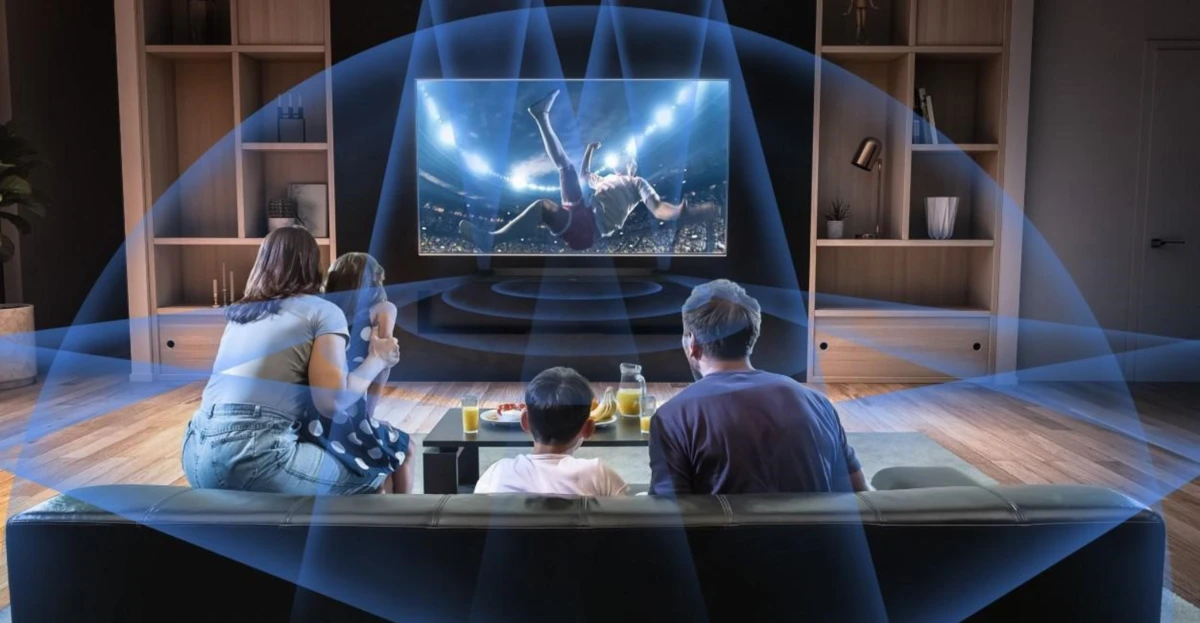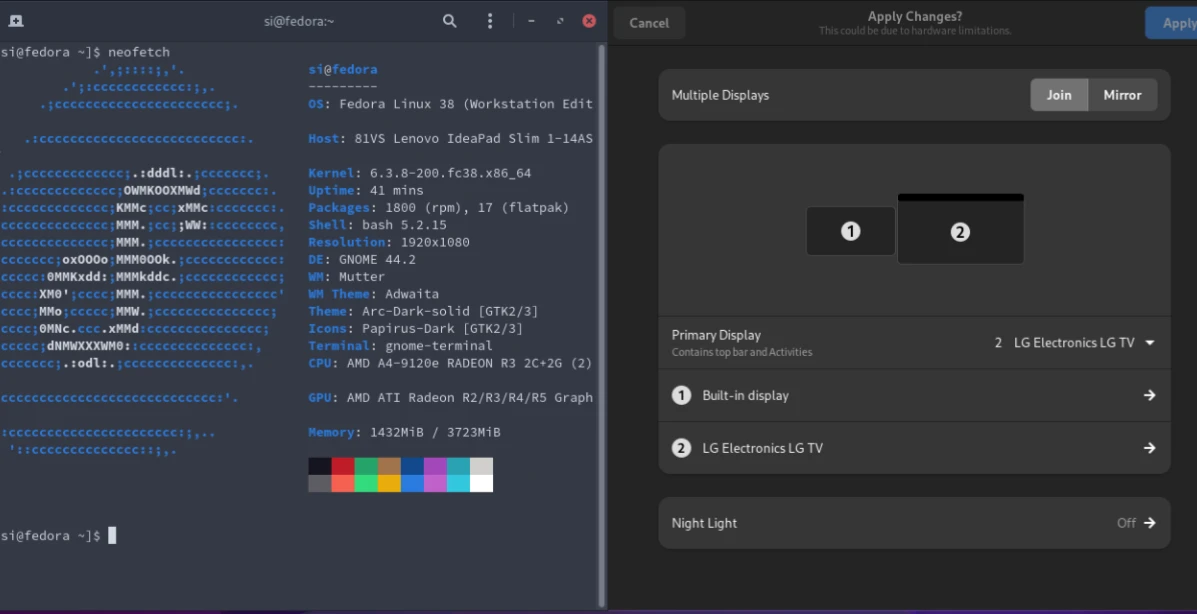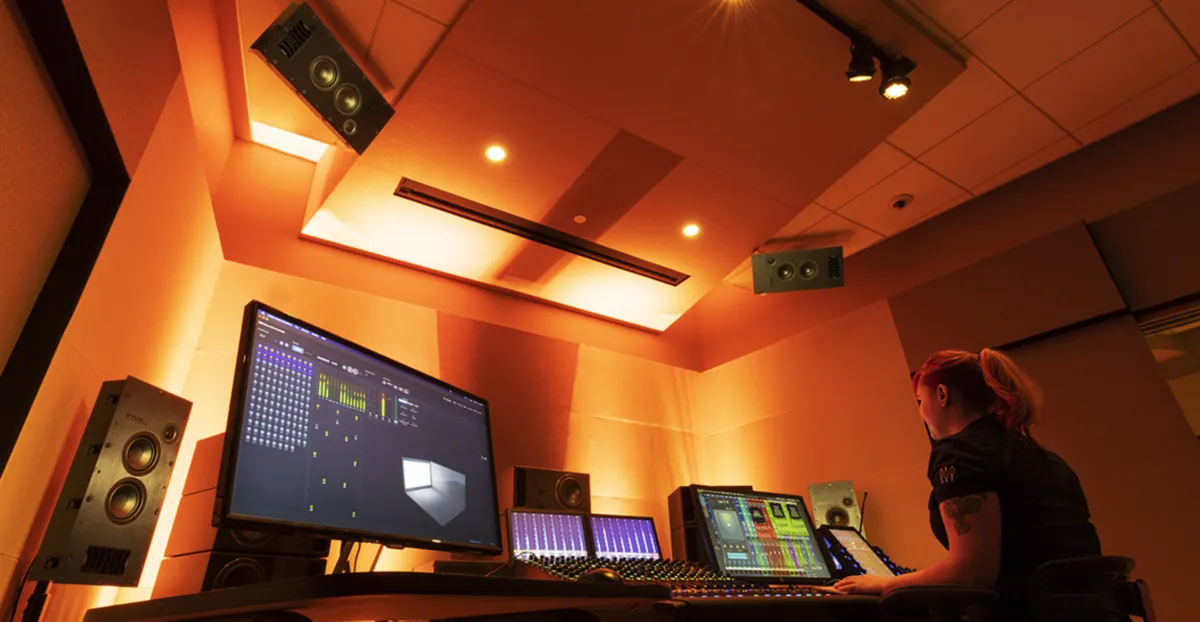In recent years, Dolby Atmos gained significant popularity in the audio industry for its immersive and three-dimensional sound experience.
It basically revolutionized the way we perceive sound in movies, music, and even gaming. However, not all TV models are equipped to support Dolby Atmos technology.
But why?
Are there any hardware or software limitations?
Well, In this article, we will explore the reasons behind this limitation and delve into the factors that influence the compatibility of TVs with Dolby Atmos.
Let’s dive in…
Understanding Dolby Atmos

Dolby Atmos is a surround sound technology that creates a more immersive and realistic audio experience by adding height channels to the soundstage.
This means that you can hear sounds coming from above, below, and all around you, as if you were in the middle of the action12.
Dolby Atmos works by using sound objects, which are individual sounds that can be placed and moved in a 3D space.
For example, you can hear a helicopter flying over your head, or a car zooming past you from left to right. It can use up to 128 sound objects and 118 simultaneous sound sources to create a rich and dynamic sound field.
Why Can’t Every TV Play Dolby Atmos?
Dolby Atmos requires up-firing speakers that can bounce sound off the ceiling to create the overhead effect. But most TVs have down-firing speakers that are limited in space and quality. For this reason, all TV models don’t support Dolby Atmos.
Here are a few more reasons you might want to explore:
Reason 1: Limitations of TV Hardware

That’s the primary reason!
Dolby Atmos also requires a device that can process the Dolby Atmos data, such as a streaming app, a Blu-ray player, or a video game console.
TVs need to have dedicated speakers or support for external sound systems that can handle the additional audio channels required for Dolby Atmos.
Slimmer Smart TV designs and compact speaker configurations may not provide sufficient space or power to reproduce the immersive audio experience that Dolby Atmos offers.
Consequently, manufacturers prioritize other features and compromise on Dolby Atmos compatibility.
Reason 2: Software and Firmware Constraints

In addition to hardware limitations, software, and system firmware play a crucial role in Dolby Atmos support.
TVs require specific software and firmware integration to process and decode Dolby Atmos audio signals accurately.
The complexity of implementing this technology, coupled with the need for regular updates and compatibility testing, can pose challenges for TV manufacturers.
Some brands may choose to focus on optimizing other aspects of their software and firmware, rather than adding Dolby Atmos functionality.
Reason 3: Licensing and Royalty Costs
Dolby Atmos is a premium feature that TV manufacturers must obtain the necessary licenses and pay royalties to incorporate it into their products.
This increases the TV’s overall pricing too!
For this, some TV manufacturers choose not to include it in their models to keep the price competitive or to focus on other aspects of the TV, such as picture quality or design.
Reason 4: Consumer Demand and Pricing
While Dolby Atmos has gained popularity among audio enthusiasts and cinephiles, not all consumers prioritize it when purchasing a TV.
Market research and consumer surveys indicate that the demand for Dolby Atmos support varies among different segments of TV buyers.
Some consumers prioritize other features such as display quality, screen size, or smart functionality over Dolby Atmos compatibility.
To cater to a broader range of customers and maintain competitive pricing, TV manufacturers choose not to include Dolby Atmos support in all their models.
What’s the future of Dolby Atmos?

Since technology continues to advance, we can expect broader adoption of Dolby Atmos in future TV models.
With the increasing availability of hardware components capable of supporting object-based audio, it is likely that more affordable TV models will include Dolby Atmos compatibility.
Additionally, as consumer awareness and demand for immersive audio experiences grow, TV manufacturers may recognize the value of incorporating Dolby Atmos across a broader range of their product lineup.
However, only time will tell what will happen.
F.A.Q.s
Q: Can Dolby Atmos be added to TVs that don’t natively support it?
In some cases, yes.
External audio devices such as soundbars or AV receivers that support Dolby Atmos can be connected to TVs without native support. By routing the audio through these devices, viewers can still experience Dolby Atmos.
However, it’s important to note that this method relies on the external audio equipment’s capabilities and might not offer the same level of integration as built-in support.
Q: Are there any alternative audio technologies similar to Dolby Atmos for TVs?
While Dolby Atmos is a widely recognized and popular audio technology, there are alternative formats available.
One example is DTS:X, developed by DTS (Digital Theater Systems), which also provides an immersive audio experience with object-based sound placement.
Some TV models may support DTS:X instead of or alongside Dolby Atmos, offering a similar level of audio immersion.
Q: Will Dolby Atmos support become more widespread in the future?
It is likely that Dolby Atmos support will continue to grow in the TV market.
As the demand for immersive audio experiences increases and Dolby Atmos becomes more prevalent in theaters and home entertainment systems, TV manufacturers may incorporate it into a broader range of models.
Additionally, as technology advances and production costs decrease, Dolby Atmos support could become more accessible across various TV price points.

Abdul Kader, a handy guy and experienced founder of a TV repair shop in Gulshan, Dhaka, Bangladesh. He is mainly an expert in understanding and repairing different types of issues with Smart TVs and providing helpful insights on how to keep them in good working order. Read his Full Story.

